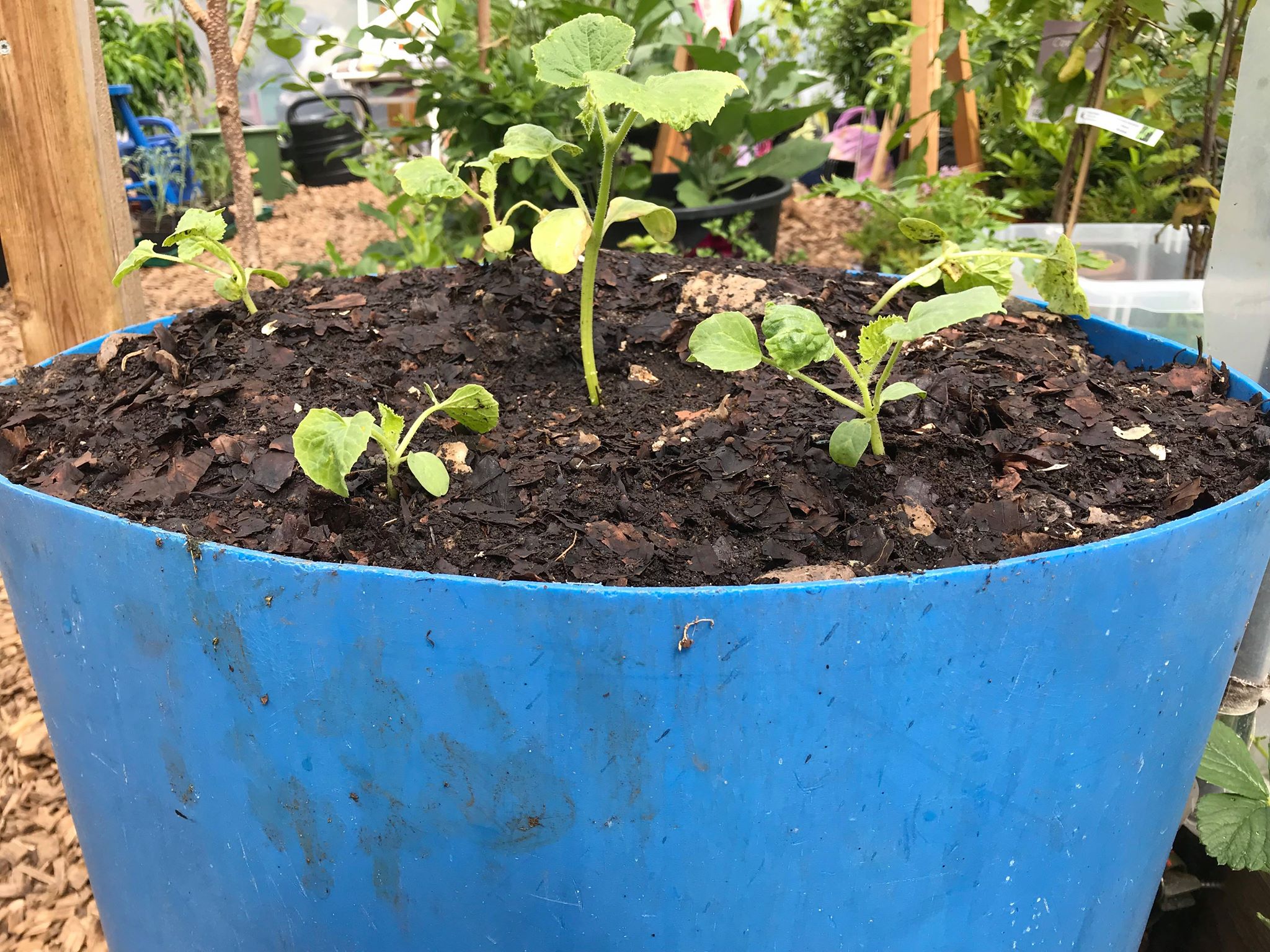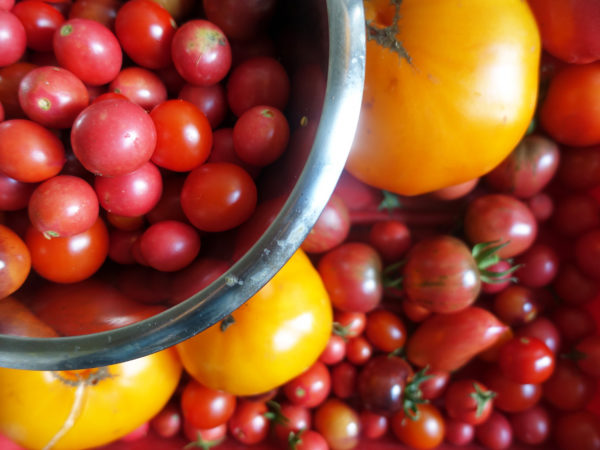Growing vegetables in compost
Forget about those large compost piles that just lay around. Why not build smaller piles that you can use instead? Try growing vegetables in compost!

One of my compost piles, I keep it in my polytunnel and I'm growing melons and cucumbers in it.
Composting is pure magic. The dead plant parts are used for new life with the help of the little worms and insects in the soil. Amazing! This happens everywhere. But here in the garden, we can choose specific spots for this process, and also make it a bit faster. I'm talking about compost piles!
I do a lot of composting in my mulched beds. I also have two large "no turn" compost piles that I mainly use for organic material from my large polytunnel. I'll write more about these piles shortly! There are of course also plenty of small compost piles in my pallet collars, barrels and two large pots where I compost waste from the kitchen too.
I like having several smaller compost piles. The smaller piles are very easy to make and work with when it's time to start using the new soil. I can also start on a new pile wherever I want and I don't need to spend several days turning my compost and transporting soil here and there. Building smaller piles is just a lot more convenient!
Learn more about bokashi compost here: Bokashi
Growing vegetables in compost: getting started
The best way to get started on growing vegetables in compost is to first find a container where you can put your material, long before you plan to use it. Use a large trash bag with holes in the bottom, a barrel or simply put the material you want to compost underneath some bushes (where it won't be in the way.) I like putting it somewhere where the microorganisms can get started on the material straight away. It's best if the process is already under way and the material is starting to get a bit soggy already before you start to build your pile. This will make the process a lot faster. Perfect!
What should I grow in my compost?
You can grow whatever you want! I try to avoid growing potatoes here though. They grow nicely in compost, but I think it's a bit of a waste to use such a good spot for a plant that doesn't need that kind of special treatment. I don't grow root vegetables with long roots (like carrot or parsnip) here either. I do however like to grow gourds, tomatoes, bell peppers, leafy greens, cabbages and other vegetables that love soil with lots of nutrients. Add some mulch on top of your compost to keep it nice and moist.
When should I get started?
You can start these little piles any time of the year, as soon as you have gathered some material that you can use. Just make sure to create holes in the bottom of the container you're using, or make sure that the compost is in contact with the soil underneath some other way. So, don't put plastic in the bottom and don't use a container without any holes. As long as the compost touches the ground underneath, the microorganisms can move in and out as they please. Start filling pots and barrels with compost now as a preparation for the leafy greens you are planning on harvesting in winter.
Good luck growing vegetables in compost!
/Sara Bäckmo
09. August 2021



Leave a Reply
You must be logged in to post a comment.